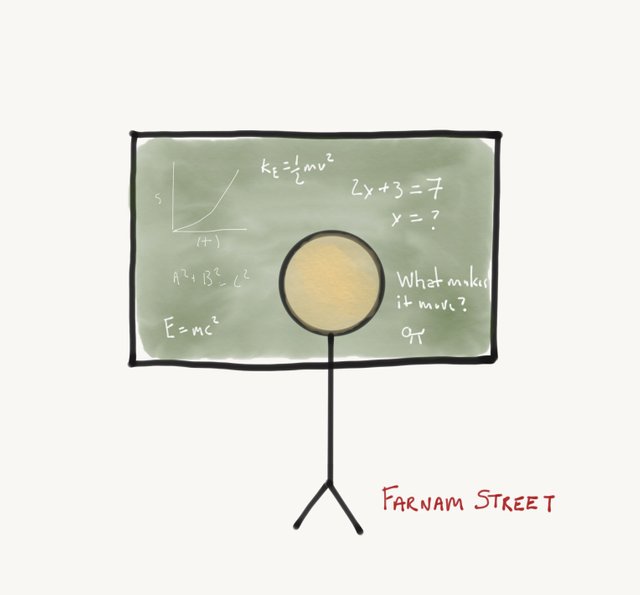Richard Feynman on Teaching Math to Kids and the Lessons of Knowledge

Legendary scientist Richard Feynman (1918-1988) was famous for his penetrating insight and clarity of thought. Famous for not only the work he did to garner a Nobel Prize, but also for the lucidity of explanations of ordinary things such as why trains stay on the tracks as they go around a curve, how we look for new laws of science, how rubber bands work, and .
Feynman knew the difference between knowing the name of something and knowing something. And was often prone to telling the emperor they had no clothes as this illuminating example from James Gleick’s book Genius: The Life and Science of Richard Feynman shows.
Educating his children gave him pause as to how the elements of teaching should be employed. By the time his son Carl was four, Feynman was “actively lobbying against a first-grade science book proposed for California schools.”
It began with pictures of a mechanical wind-up dog, a real dog, and a motorcycle, and for each the same question: “What makes it move?” The proposed answer—“ Energy makes it move”— enraged him.
That was tautology, he argued—empty definition. Feynman, having made a career of understanding the deep abstractions of energy, said it would be better to begin a science course by taking apart a toy dog, revealing the cleverness of the gears and ratchets. To tell a first-grader that “energy makes it move” would be no more helpful, he said, than saying “God makes it move” or “moveability makes it move.”
Feynman proposed a simple test for whether one is teaching ideas or mere definitions: “Without using the new word which you have just learned, try to rephrase what you have just learned in your own language. Without using the word energy, tell me what you know now about the dog’s motion.”
The other standard explanations were equally horrible: gravity makes it fall, or friction makes it wear out. You didn’t get a pass on learning because you were a first-grader and Feynman’s explanations not only captured the attention of his audience—from Nobel winners to first-graders—but also offered true knowledge. “Shoe leather wears out because it rubs against the sidewalk and the little notches and bumps on the sidewalk grab pieces and pull them off.” That is knowledge. “To simply say, ‘It is because of friction,’ is sad, because it’s not science.”
You got a 5.38% upvote from @upme thanks to @madakista! Send at least 3 SBD or 3 STEEM to get upvote for next round. Delegate STEEM POWER and start earning 100% daily payouts ( no commission ).
Congratulations @madakista! You received a personal award!
You can view your badges on your Steem Board and compare to others on the Steem Ranking
Vote for @Steemitboard as a witness to get one more award and increased upvotes!